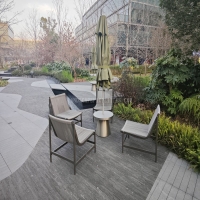Welcome to the website for landscape facilities products and knowledge.
How does the table’s design align with corporate branding or interior design themes?
In contemporary corporate environments, every element of office furniture serves as a silent ambassador for brand identity. The strategic design of conference tables, workstations, and collaborative surfaces transcends mere functionality to become powerful visual communicators of organizational values and aesthetic principles.
The integration begins with color psychology, where table finishes mirror corporate color palettes – deep mahogany conveying tradition and stability, or sleek white laminates projecting innovation and clarity. Material selection further reinforces brand messaging, whether through sustainable bamboo surfaces for eco-conscious companies or polished metals for technology-driven enterprises.
Beyond surface aesthetics, the very form of tables speaks volumes about corporate culture. Curved, organic shapes often dominate creative agencies, promoting fluid collaboration, while angular, modular designs suit structured financial institutions emphasizing precision. The height-adjustable tables of modern tech companies physically embody adaptability and employee wellness values.
Custom engraving of logos, strategic incorporation of brand patterns in inlays, and even tailored dimensions that reference significant company numbers create deeply personalized statements. These elements transform ordinary furniture into branded artifacts that continuously reinforce corporate identity to both employees and visitors.
The most successful table designs achieve symbiotic relationships with overall interior themes. In minimalist offices, tables with clean lines and hidden cable management maintain visual purity. Industrial spaces might feature reclaimed wood tables with metal bases that echo exposed architectural elements. The lighting interaction, spatial proportions, and acoustic properties of tables further contribute to holistic environmental experiences.
Through this multidimensional approach, table design becomes an instrumental component in crafting cohesive, brand-aligned workspaces that not only serve practical needs but also actively shape organizational perception and cultural identity across all touchpoints.
Related search:

Recommendation
Metal structure rattan chair without armrests for single person, with woven seat and backrest.